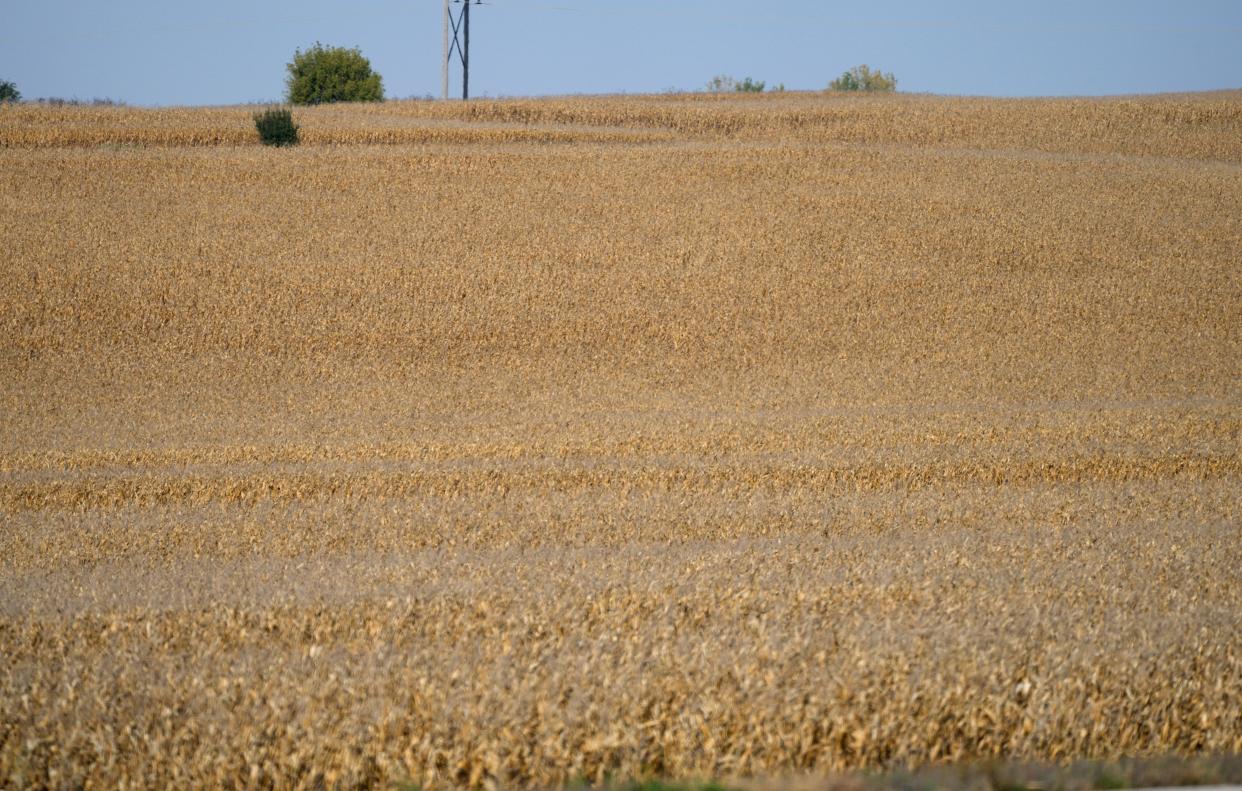Rising land, input costs challenge South Dakota tenant farmers’ dreams of ownership

Lance Perrion is an Ipswich-area farmer in his early 30s. He toils on 1,000 acres of rented cropland but yearns to own land of his own.
Ownership is elusive for Perrion and some of his peers.
“It’s definitely difficult to get going as a young farmer,” he said. “And if new people can’t compete to own the main asset of this industry, the land, then why compete?”
Hank Wonnenberg, a Gregory-area farmer and real estate appraiser, sees a lot of demand for acres.
“I track a lot of sales,” Wonnenberg said. “There’s a lot of transactions where the buyers are out of state. A lot of times, they’re from way out there; Texas, Florida or wherever.”
The situation is not good for the future of agriculture in South Dakota, Wonnenberg said.
“Pretty soon, we’re nearly all going to rent – tenants doing the farming,” he said.
The U.S. Department of Agriculture hasn’t published new data on the topic since 2014. That year, 60 percent of South Dakota agricultural land was farmed or ranched by its owner, 25 percent was rented by farmers or ranchers from a non-agricultural landlord, and 15 percent was rented by farmers or ranchers from other farmers and ranchers. Those percentages mirror national averages.
Meanwhile, South Dakota has experienced a surge in cropland value, making it harder to afford.
The average value of an acre of cropland in South Dakota jumped 19% from 2021 to 2022, according to the USDA. At this point, South Dakota State University Extension estimates that an acre of cropland in the state costs an average of $5,458 – $4,715 more than in 2003.
The cause is more complicated than wealthy investors buying up land, said Kevin Moe, regional credit policy officer for First National Bank of Omaha. To the extent wealthy investors are a factor, Moe said it’s likely less of one now, as better alternatives and higher interest rates make farmland less appealing to buyers.
Surging land values have been fueled by increased global demand for grain, the limited availability of land for sale, federal pandemic stimulus payments that increased demand for land (because more farmers had more cash on hand), and higher corn prices that have made cropland more profitable.
“If you were to put historical corn prices next to that,” Moe said, referencing rising land prices, “you’d find that they follow pretty closely.”
It’s not just land values putting ownership out of reach for producers with less capital and cash on hand.
Fertilizer and fuel prices jumped more than 33% in 2021, according to Farm Credit Services. Farm machinery, building materials, seed and feed costs increased, as well.
Farmers with less cash take out loans to afford those inputs, Moe said, and the interest rates on those loans more than doubled in recent years.
“It’s just so capital intensive,” Moe said. “It is a barrier to entry, there is no doubt; whether you’re trying to rent or buy, because the costs of production are so high. And I don’t have a good answer to solve that. It’s just a reality.”
Ultimately, more tenant farmers are struggling to grow or secure land holdings.
“It’s just about impossible for a new person to enter the farming industry,” Wonnenberg said. “And because higher land prices also tend to drive up rent, some can’t even afford to rent now either.”
According to SDSU Extension, an average acre of cropland in the state costs $149 to rent annually – $96 more than in 2003, but $1 less than the peak in 2014. Inflation and higher interest rates have made conditions far worse than in 2014, Wonnenberg said.
Programs exist in the state to help new farmers develop a sustainable business model, like the Farm Beginnings program run by Dakota Rural Action. Farm Beginnings is a training program where local farmers help participants launch a profitable operation.
However, the program is less focused on the large-scale grain and cattle farms popular in the state.
Frank James is the director of Dakota Rural Action. He said new farmers are finding inroads with diverse, smaller-scale farms – raising things like bees and chickens, growing things like fruits and vegetables – selling to the communities in which they live.
“A lot of the problem is federal crop insurance guarantees producers get a return on that grain,” James said. “And that guarantee drives up the price of land.”
This article originally appeared on Sioux Falls Argus Leader: Rising land, input costs challenge tenant farmers’ dreams of ownership

